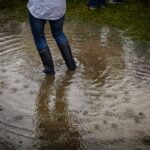Masonry construction is resilient and durable but susceptible to moisture damage if not adequately protected. A professional masonry contractor will waterproof the brick and concrete structures of your building, protecting it from the elements.
Efflorescence and algae growth on a masonry wall can be unsightly, but it’s also an indicator of moisture penetration. Using a breathable masonry waterproofing product can prevent these issues before they start.
Waterproofing
Masonry waterproofing is essential to the protection of your brick and stone building. Without a sound barrier against moisture penetration, your masonry could be subject to various issues, including algae growth, cracking, and premature degradation.
Concrete masonry units (CMUs) are characteristically porous and absorb about 17 percent of the water that comes into contact with them. Without a protective barrier, this moisture can cause brick spalling, deterioration of mortar, and efflorescence.
Waterproofing can be done with epoxy, rubber, or latex paint, depending on the product and surface preparation. However, these products are not breathable and can trap moisture in the wall as vapor escapes. This can lead to blistering, peeling, and other damage to the masonry. Instead, choose a waterproofing treatment containing silanes and siloxanes, which line the masonry pores and allow them to breathe.
Efflorescence
Efflorescence is a crystalline deposit of water-soluble salts that appear as white spots on brick, concrete, paving stones, stucco, or other building materials. Efflorescence is most visible in the winter or spring when moisture in the masonry structure evaporates, bringing the dissolved compounds to the surface.
The best way to prevent masonry efflorescence is to waterproof your brick walls. Several masonry waterproofing products are available, including clear water repellents and silanes or silicones. These products react with the concrete surface and create a barrier that will not allow water to penetrate and leave soluble salts behind.
If you have existing brick masonry that is affected by water-soluble salts, evaluate the conditions and history of your structure to determine the source of moisture. This will help you plan effective solutions.
Algae
Many types of fungi, algae, and mosses have the potential to damage or discolor historic masonry surfaces. While they may not be detrimental to the structural integrity of a masonry surface, they are unsightly and a detriment to its appearance.
Fungi and algae buildups often indicate ineffective water drainage or damaged pointing, allowing moisture to accumulate within the masonry substrate having nowhere to escape. Frequent cleaning with commercial cleaners that contain chlorine, metallic salts, or bleaches may not only fail to remove growth but can also cause surface damage and staining.
In addition, masonry waterproofing protects brick, stone, and masonry walls by creating a barrier that helps to eliminate moisture penetration limiting contaminant growth and preventing issues such as mildew and mold. It also reduces radon gas penetration through basement walls.
Cracks
Masonry is susceptible to cracking due to temperature changes, moisture builds, and seismic activity. Thoughtful construction and regular inspection can prevent cracking and leaks.
Leaks are often caused by masonry movement and differential cracking. Movement is a normal part of the life of any masonry structure, and designers can help accommodate movements by installing expansion joints.
Differential cracking can occur when dissimilar materials are combined in a wall, such as clay brick and structural steel. This happens because the two materials react to temperature and moisture changes differently.
Proper waterproofing will help to minimize this issue. Waterproofing is also essential for preventing damage to masonry from ground movement, which can lead to subsidence and settlement of walls. This can result in cracking and efflorescence.
Mold
Masonry does not offer a food source to mold and does not rot, reducing the chance of mold growth in brick walls and structures. Proper masonry construction and detailing, along with HVAC considerations, can further reduce the opportunity for mold formation in finished masonry buildings.
Using a masonry waterproofing product can help protect concrete, masonry, and brick from moisture that can cause fungal growth. The most crucial step is to find and mitigate the water source, fill cracks, and apply a waterproofing product. For a waterproofing product to work correctly, masonry surfaces should be dry and thoroughly cleaned before application. In addition, the mortar must be well tooled and ample movement joints provided. This will reduce mortar deterioration and ensure the coating is applied at total coverage rates.




